Authors:
ABSTRACT
Aim
The aim of this retrospective study was to determine the prevalence of caries and treatment needs in the collective of
patients ?16 years of age, who underwent scheduled dental general anaesthesia (DGA) at the University Clinic of Innsbruck from
January 2015 to June 2019, with respect to demographic factors.
Methods
A retrospective analysis of children’s
diagnoses, demographics, and dental treatment under general anaesthesia in Innsbruck, Austria, from 2015 to 2019 was performed.
Anonymised demographic data (age; gender; the presence or absence of general disease or disablement; parents’ first language
(German- (GS) or non-German-speaking (non-GS), reflecting ethnicity; and the number of teeth restored and extracted under DGA were
collected from patients’ files. Data was analysed by means of descriptive and comparative statistics.
Results
The main group
consisted of 545 subjects at a median age of 5.3 (IQR 4.4-6.6) years, who had exclusively primary teeth and or first molars that received
restorations or were extracted. Of the subjects, 84.4% were classified with uncooperativeness due to dental anxiety and 15.6% with
systemic diseases or intellectual and or physical disablement. In this group, 47.9% were GS and 52.1% were non-GS or had GS or non-
GS parents. In the total sample, 5 (IQR 3-7) primary teeth were restored and 4 (IQR 4-7) extracted. Subgroup analysis revealed
statistically significant differences in the number of extracted primary teeth between children with and without systemic diseases or
disablement - 3 (IQR 1-5) versus 4 (IQR 2-7) - and between children of GS and non-GS parents - 4 (IQR 2-6) versus 5 (IQR 3-7.8). Zero
(IQR 0-0) first molars were filled and extracted.
Conclusion
Within the study collective of children in poor oral health, the offspring
of non-GS families were overrepresented (compared to their prevalence in the total population) and displayed a higher prevalence of
deep caries than those of GS parents. By intensifying and special gearing of prophylactic measures to the non-GS population and
promoting the parents’ insight into the importance of oral hygiene and regular dental attendance, the demand for scheduled DGA might be greatly reduced. In the small share of children who suffer from severe diseases or disablement and are thus unable to cooperate with
home care or dental treatment, DGA will remain the treatment of choice.
PLUMX METRICS
Publication date:
Keywords:
Issue:
Vol.21 – n.4/2020
Page:
Publisher:
Cite:
Harvard: D. Schnabl, L. L. Schanner, F. Barbieri, J. Laimer, E. Bruckmoser, R. Steiner, I. Grunert (2020) "Is dental general anaesthesia in children an outdated concept? A retrospective analysis", European Journal of Paediatric Dentistry, 21(4), pp283-286. doi: 10.23804/ejpd.2020.21.04.5
Copyright (c) 2021 Ariesdue

This work is licensed under a Creative Commons Attribution-NonCommercial 4.0 International License.
